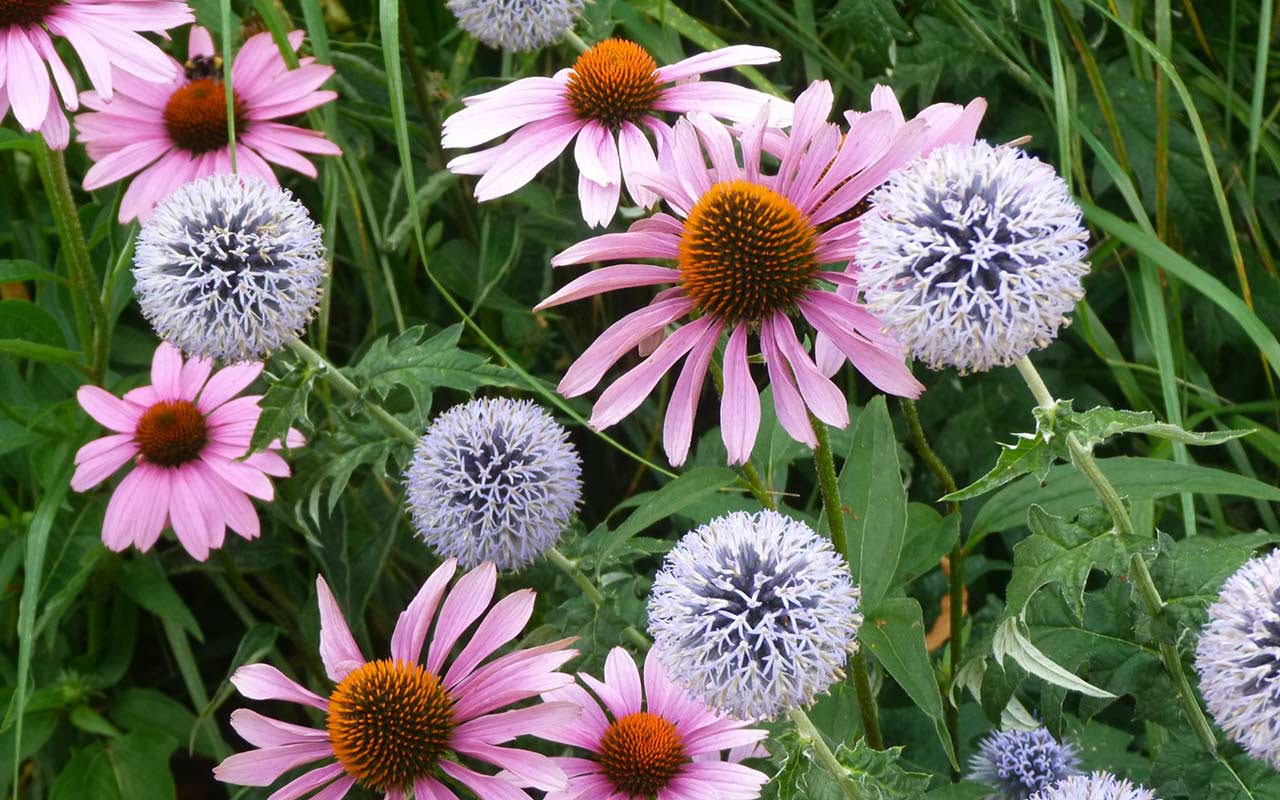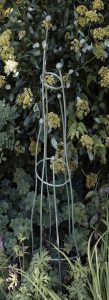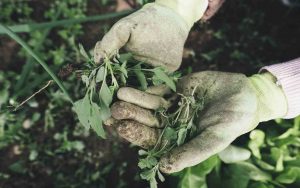Menu
Summer feels like it’s finally on its way! The risk of overnight frosts has greatly reduced, meaning it’s safe to start planting out more tender specimens, and the sun will be setting after 9pm by the end of the month, meaning we have longer evenings to enjoy our gardens. To get your garden summer-ready, here’s our round-up of key jobs to do this month.

Nicknamed because it coincides with the RHS Chelsea Flower Show (this year, back in its late May slot), the ‘Chelsea chop’ means pruning back your herbaceous plants by about a third. Depending on the plant, this can have some really positive benefits, in particular encouraging new growth (and often, more flowers) whilst also keeping the plant more compact, requiring less support. If you’re not sure when a plant is going to flower, or what effect a Chelsea chop might have, you don’t have to chop the whole plant; many gardeners will prune just the front half of a plant or a few stems, to prolong a flowering season or see how a plant responds. The kind of plants that do react well to a good Chelsea chop include perennials like echinacea, helenium and phlox.
Of course, always check plants for nests before you start any pruning, as some birds may still be rearing young at this time of year. If you want to read more about the Chelsea chop, follow this link to the RHS website.
Harden off and plant out
Now the risk of ground frost is (almost certainly) passed here in Hampshire, it’s safe to start hardening off young plants before planting them outside. If you’ve started your tomatoes or courgettes indoors or in a greenhouse, for example, they can come outside to a sheltered spot or cold frame to acclimatise. The same also applies to more tender summer bedding and annuals, like cosmos and nasturtiums. Just keep an eye on the weather forecast: be prepared to throw fleece over them or whisk them back inside if the overnight temperature is set to dip below 4°C. Two to three weeks is usually enough to harden off most things but bear in mind that, the greater the temperature difference between inside and out, the longer you might want to give them.
Now is also a good time to plant up pots and hanging baskets for summer colour. We will be getting plenty of suitable bedding plants into our Titchfield store – like pelargoniums and osteospermums. We’d recommend leaving the pot or basket in a sheltered spot for a few weeks, so you can keep it well watered while the plants establish before you move it to its final position.
 Tie up
Tie upThe best time to put plant supports in place is before they are needed. This is partly because you won’t have to fight with so much lush foliage to get the support in the right place but it’s also because the plant will then grow through and over the support, so it will become practically invisible. Plants that tend to grow particularly tall, which might make them prone to the wind, would welcome a bamboo cane or other single support; phlox or delphiniums are good examples. Plants that can be very lush or get top-heavy, like peonies or alstroemeria, might prefer being supported in a framework, just so that they don’t flop in strong winds or under the weight of heavy rain. Climbers – everything from sweet peas to clematis – might like a wigwam or lattice to scramble up and through.
There are no rules for what type of plant needs what type of support, just be led by the plant’s natural habit and your own preference in your garden. What we would strongly advise, however, is to pop something over the top of any individual canes or spikes – a tennis ball or a small pot would be fine – just so you don’t take an eye out when you’ve forgotten it’s there and bend down to weed around it!
 A little light weeding…
A little light weeding…Because everything is really growing, now is the time to keep on top of the ‘garden tidying’ jobs, so that no particular job gets out of hand. (‘Little and often’, as my Mum would say!) A quick hoe over bare soil every few weeks will take much less time than having to weed out larger unwanted plants later, for example. Nipping off stray shoots from topiary or shrubs is a faster job as and when you spot them. Deadhead any spent flowers to encourage more (unless you plan to collect seeds in the autumn). These little but regular jobs also allow you to keep an eye for any potential pests, like aphids or lily beetles, as you potter around the garden so you can act sooner.
If you have a pond or water feature, with the extra sunlight now, keep an eye on things like pondweed and algae to keep the water clear. Scoop out any unwanted plant life but leave it on the side for a day or two if you can, so that any little critters living in it can crawl back into the water before you compost the plant material. And you might want to think about an extra compost bin at this time of year so you can recycle more of your own green waste.
Feed and water If the past few summers in this part of the world are anything to go by, it’s quite likely that any rain will come in short bursts with some long dry spells in between. If we want to help our gardens not just survive but thrive in these conditions, we need to be mindful of their needs and water or feed them accordingly.
If the past few summers in this part of the world are anything to go by, it’s quite likely that any rain will come in short bursts with some long dry spells in between. If we want to help our gardens not just survive but thrive in these conditions, we need to be mindful of their needs and water or feed them accordingly.
As a rule of thumb, if it’s been dry for a while, water takes priority over food. Once a plant is hydrated, then it might appreciate some feed or fertiliser. How much rain there will be can also influence your choice of feed: a liquid feed that you water on may be a better choice than a granular feed which requires rain to dissolve it.
Plant feeds are based around three main ingredients: potassium (or potash), phosphorus and nitrogen (represented by the chemical symbols K, P and N respectively). Potassium is great for encouraging fruits and flowers, so can benefit everything from your tomatoes to your spent spring bulbs (for good flowering next year). On the other hand, plants that you want to be green and leafy (your lawn probably being the best example) will prefer a nitrogen-rich feed instead. Phosphorus is in all plant and animal cells and helps convert sunlight into energy for growth so is useful for any plant during its growing season.
Don’t go overboard with your feeding. Twice as much food doesn’t mean twice as many fruit or flowers (probably just an exhausted plant!). Follow the dosage instructions on the packet, or on the recipe if you’re making your own feeds.
The long-range weather forecast is suggesting that this summer will be pleasantly warm and mostly dry so let’s hope this is the start of a blossoming gardening season!
Further reading this month:
What to plant in May – Rhododendrons and Azaleas
Your guide to getting the most from your summer bedding
Explore our Father’s Day Gift ideas
As we move into summer, think about pruning any trained fruit trees
Hambrooks garden design, landscaping & garden maintenance throughout Hampshire for over 50 years.

